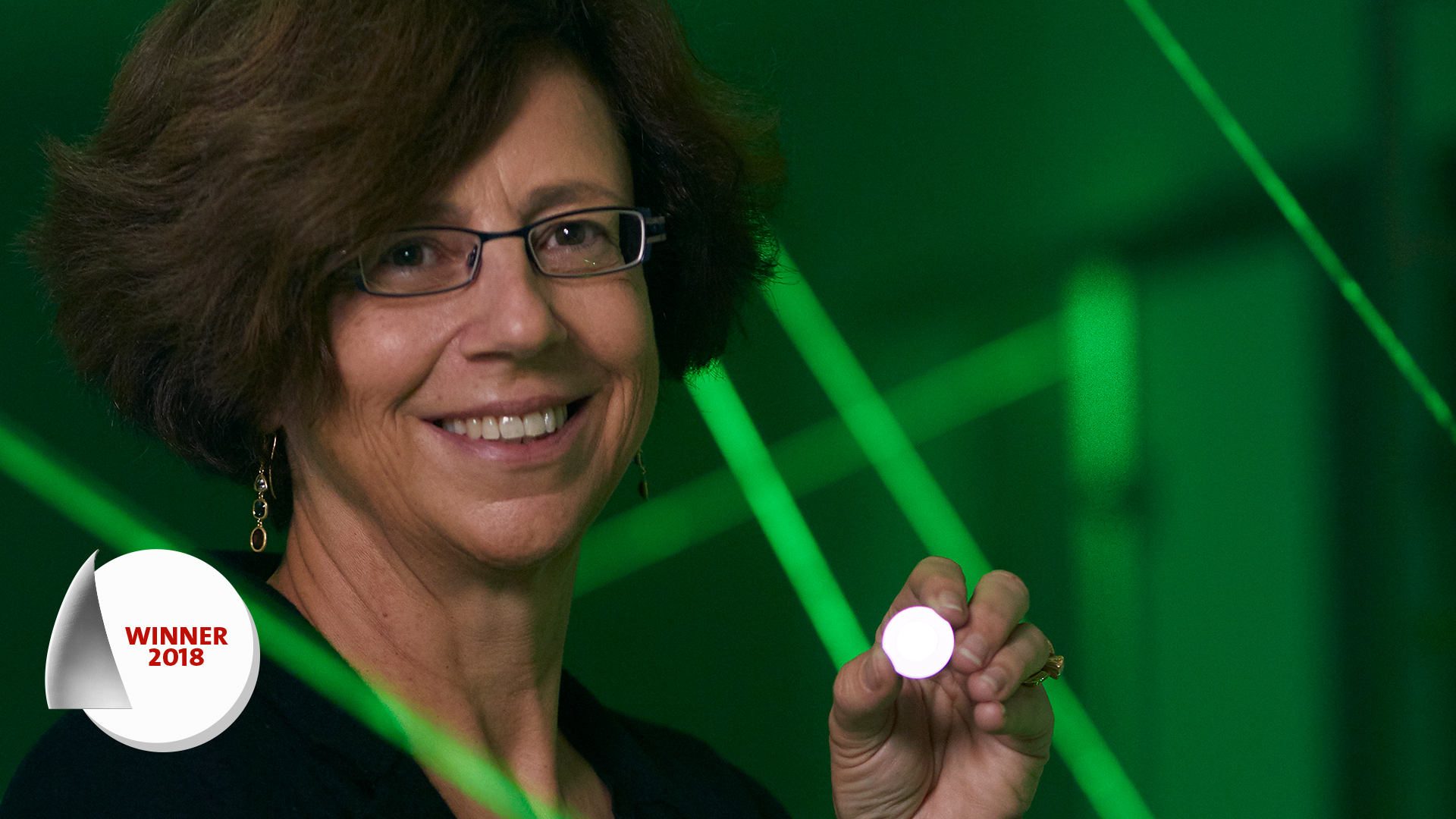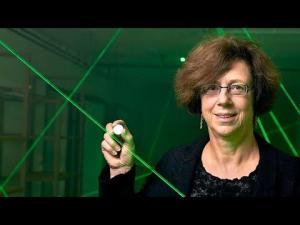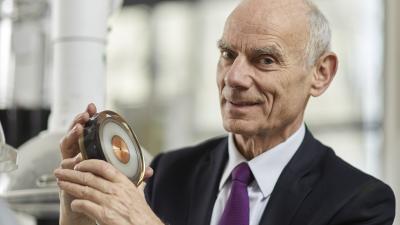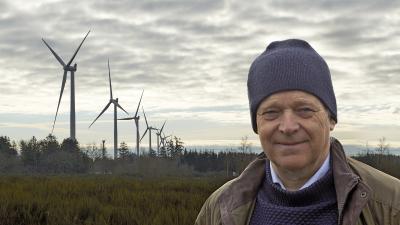Ursula Keller
Ultrafast pulsed lasers
Winner of the European Inventor Award 2018
Medical surgery, detailed manufacturing and scientific research took a quantum leap forward when Swiss scientist, inventor and professor Ursula Keller discovered how to turn continuous laser light into ultra-fast laser pulses. With light bursts lasting less than a trillionth of a second, Keller's inventions handed science, industry and the medical community an instrument of unprecedented precision.
Scientific research, industrial micromachining and critical medical operations require increasingly precise tools. But scientists, manufacturers and surgeons alike were unable to tame the instrument of greatest precision - light itself.
Keller's semiconductor saturable absorber mirror (SESAM), which she invented in 1992 while working at AT&T Bell Laboratories, provided a practical method to create extremely short, energetic bursts of laser light. Thanks to her developments, lasers can now produce short bursts ranging in duration from picoseconds (10-12 seconds) to femtoseconds (10-15 seconds) and repeating up to several billion times a second.
Ultra-fast Femto-Lasik for eye surgery is able to make tiny incisions with no risk of damaging nearby tissue. Similarly, cancerous tissue can be cut away without searing neighbouring healthy cells. And the technology has opened up numerous machining and material-processing applications that are vital to the automotive and electronics industries.
In her role as a physics professor at the Eidgenössische Technische Hochschule (ETH) Zurich, Keller has further refined and developed the SESAM concept, widening it to include more types of laser; in addition, she has developed precise scientific measuring equipment that explores the wonders of the universe down to the quantum level.
Societal benefit
Nearly every commercially available ultra-fast laser now incorporates SESAM in its design. Thanks to these ultra-fast lasers, extremely small, thin slices of a material can be removed (10 to 100 nanometres per laser pulse) - not by heat, as with other types of laser, but through a process called cold ablation. In medical applications, especially in eye surgery, SESAM-equipped lasers deliver the precise amount of energy required to make fine incisions without damaging the surrounding tissue.
Because these lasers do not heat the surrounding material, they are also used for fine details on glass, polymer and silicon substrates that would otherwise crack or become brittle under higher temperatures. These lasers are helpful for the manufacturing of high-tech electronic devices such as smartphone touchscreens, flat-screen monitors and television sets, which require etching patterns on toughened glass or precision cutting.
The automotive industry has also been a major adopter of ultra-fast laser applications since SESAM technology was first marketed two decades ago. Ultra-fast lasers can "drill" intricate, small pits to reduce friction and extend the product life of small rotating parts. They are also a replacement for standard micromachining techniques used to optimise the spray pattern of direct fuel injectors. The resulting, simple but precise design feature can help improve fuel efficiency by 10% or more without affecting performance.
In addition, Keller has adopted her SESAM technology for inexpensive laser light sources, making them suitable for applications such as laser displays, telecommunications and as the light source for medical imaging technologies. A newer adaptation of SESAM, called MIXEL, is easier to produce and broadens the potential applications to include consumer electronics - such as lasers in gaming consoles and laser guidance systems (LIDAR) for self-driving vehicles.
Economic benefit
The global market for ultra-fast lasers was valued at EUR 2.17 billion in 2017, or about one-fifth of the total laser market, and is expected to reach a value of EUR 8.3 billion by 2023. The automotive industry has been identified as one of the prime areas for growth, because of new ultra-fast laser micromachining applications for both turbocharger turbine wheel shafts and direct fuel injectors. The global market for ophthalmic (eye surgery) lasers, including ultra-fast (femtosecond) lasers, is expected to grow from about EUR 784 million in 2016 to around EUR 1 billion in 2021. The femtosecond laser segment is expected to dominate the overall market in terms of revenue and growth.
Major players in the ultra-fast laser sector include France-based Amplitude Systèmes, US firm Coherent, German company Trumpf, Lithuania's Ekspla and the UK's Fianium. Another is Lumentum, the parent company of Time-Bandwidth Products, which is a spin-off company from ETH Zurich that Keller started in 1995.
Keller also launched a second start-up, GigaTera, that was incorporated into Time-Bandwidth Products. Several of Keller's students have developed spin-off or start-up companies of their own, including High-Q (now owned by MKS), Onefive (acquired by NKT Photonics in 2017) and Amplitude Systèmes. While it is difficult to assign exact values, these activities are estimated to have generated over EUR 100 million of economic activity, with the majority of their high-end laser jobs created in Europe.
How it works
The word "laser" stands for "light amplification by stimulated emission of radiation". As such, laser light results when atoms are stimulated by energy (e.g. heat or light) and their electrons then emit photons (i.e. light energy). Typically, highly pure crystals such as synthetic rubies or aluminium garnets are used due to their efficiency and versatility. When these crystals receive an energy input, the electrons emit photons of uniform frequency as a monochromatic laser beam.
A typical continuous laser comprises a crystal between two mirrors so that laser light is reflected back and forth inside the crystal until an energy threshold is reached and one mirror lets laser light pass through as a continuous beam. Keller changed that with her new laser called SESAM. She replaced one mirror with a piece of semiconductor that acts as a mirror - but only up to a point. As the waves of light reflect between the mirrors, the semiconductor absorbs the lower-energy light, leaving just the high-energy light to be amplified. Once a threshold is reached ("saturation"), the semiconductor briefly ceases to act as a mirror and emits a single, short pulse of light (approx. five per cent of the energy in the crystal).
Keller's ultra-fast laser technology is also enabling the study of near-instantaneous, subatomic reactions. Her laser-driven "attoclock" records time intervals down to a few billionths of a billionth of a second - in other words, attoseconds (10-18 seconds), an attosecond being roughly the amount of time it takes light to travel across neighbouring atoms. Used as a virtual subatomic strobe light, the attoclock "freezes" the motion of fast-moving objects such as electrons, allowing measurements of phenomena in the infinitesimal world of quantum mechanics.
The inventor
A native of Switzerland, Ursula Keller received a Bachelor of Science degree in physics from ETH Zurich in 1984. She then moved to Stanford University where she received a Master of Science degree (1987) and a PhD (1989), both in applied physics. Keller joined AT&T Bell Laboratories (today Nokia Bell Labs) in 1989. In 1993, she accepted a professorship at ETH Zurich in the Ultrafast Laser Physics research lab, where she co-founded spin-off Time-Bandwidth Products (1995) and start-up GigaTera (2000), both of which were later acquired by California-based Lumentum.
Keller has published more than 440 peer-reviewed journal articles and 11 book chapters. She is one of the world's leading scientists in the field of ultra-fast photonics and holds seven granted European patents. Among her numerous awards, she has received the IEEE Photonics Award (2018), the Weizmann Women & Science Award (2017), The Optical Society's Charles Hard Townes Medal (2015) and the Geoffrey Frew Fellowship of the Australian Academy of Science (2015). Keller has supervised over 70 PhD students; 11 of her past students have become professors and several others have gone on to positions at laser manufacturing companies or have launched companies of their own. Since 2010, Keller has served as the Director of the Swiss National Centre of Competence for Research in Molecular Ultrafast Science and Technology. In 2014, she became a member of the research council of the Swiss National Science Foundation in the Mathematics, Natural and Engineering Sciences division.
Did you know?
Europe plays a major role in both the research and manufacture of ultra-fast lasers. Its large amount of laser know-how has helped concentrate about 73% of the world's highly intense, ultra-fast lasers (petawatt-class) in Europe. The EU Extreme Light Infrastructure research project, with its budget of EUR 850 million, has the mission to bring together top experts to create the world's most powerful laser. Europe is also the home of the Laserlab-Europe consortium, which connects key research centres - such as ETH Zurich, the University of Jena, ParisTech's Institut d'Optique and the Max Planck Institute for Quantum Optics - with strong industrial players in the field, such as Amplitude Systèmes and Trumpf.
Over the years, lasers have played key roles in the innovations of several finalists and winners at the European Inventor Award. The list includes the inventors of optical coherence tomography, James G. Fujimoto, Eric A. Swanson and Robert Huber (2017; Non-EPO countries - winners); the electronic engineer behind the coding method for CDs, DVDs and Blu-rays, Kornelis A. Schouhamer Immink (2015; Lifetime achievement - finalist); the pioneer of laser eye surgery Josef Bille (2012; Lifetime achievement - winner); the inventors of quantum cascade lasers, Federico Capasso, Jérôme Faist and team (2012; Non-EPO countries - finalists); and the inventors of the scanning laser ophthalmoscope, Douglas Anderson and team (2008; SMEs/Research - winners).
Media gallery
Contact
European Inventor Award and Young Inventors Prize queries:
european-inventor@epo.org Subscribe to the European Inventor Award newsletterMedia-related queries:
Contact our Press team#InventorAward #YoungInventors










